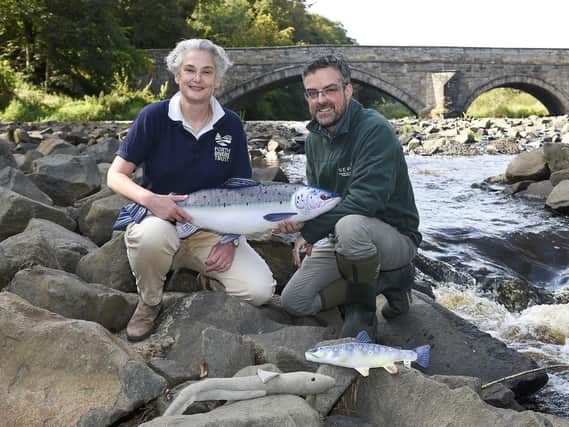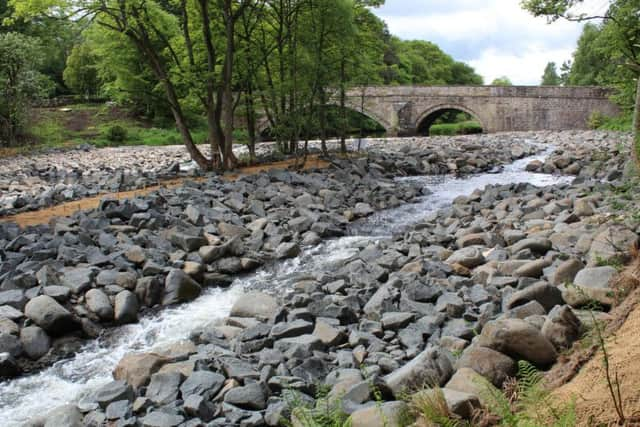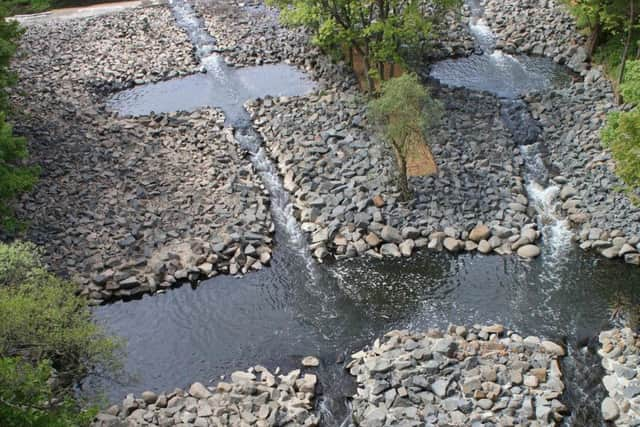UK’s largest rock ramp 'staircase' helps fish travel upstream on River Almond for first time in 200 years


The 85m x 50m staircase will connect the lower and upper reaches of the river with over 9000 tonnes of rock.
In the past fish travelling upstream were left floundering by the huge Howden Weir, which prevented them returning to the upper Almond to spawn.


Advertisement
Hide AdAdvertisement
Hide AdThe new waterfall-like structure will provide a series of pools, runs and easy leaps to help the fish travel across the face of the weir.
It is hoped that this measure will help the overall ecology of the river and make the rivers’ fish population, including trout and Atlantic salmon, more sustainable.
Built over three months, much of the ramp is made from rock recycled from other developments in West Lothian.
The weir was originally built in the early 19th century to power the New Calder Paper Mill, which produced wrapping paper.


Advertisement
Hide AdAdvertisement
Hide AdThe Howden Rock Ramp is one of eight projects on the River Almond to help fish return to the upper stretches of the river as part of the RiverLife: Almond and Avon Project.
The project involves the Forth Rivers Trust and West Lothian and City of Edinburgh Councils.
It is funded by both councils and the National Lottery Heritage Fund, the Scottish Government and SEPA Water Environment Fund.
Director of the Forth Rivers Trust Alison Baker said: “The completion of this key work for the improvement of conditions for migratory fish on the River Almond is momentous and the progress made on other projects this year is very exciting. The RiverLife project has only been delivered due to 10 years of hard work by the Trust, SEPA and other organisations including West Lothian Council.”
Advertisement
Hide AdAdvertisement
Hide AdA programme of smaller scale activities has also included tree planting, river bank restoration and riverside furniture repair.
The RiverLife team has also led community engagement works delivering guided walks, wildlife identification and a primary school education programme called ‘Fish in the Classroom.’
SEPA Water Environment Fund spokesperson Francis Hayes said: “Completion of the rock ramp at Howden Bridge is another step in a long term project to improve fish migration, wildlife habitats and community engagement along the River Almond. This new route for fish is positive proof of what can be achieved in local rivers by good partnership working and we look forward to the project’s next exciting phase.”
The River Almond has its source in the Cant Hills before flowing through Livingston and on towards the Firth of Forth.
